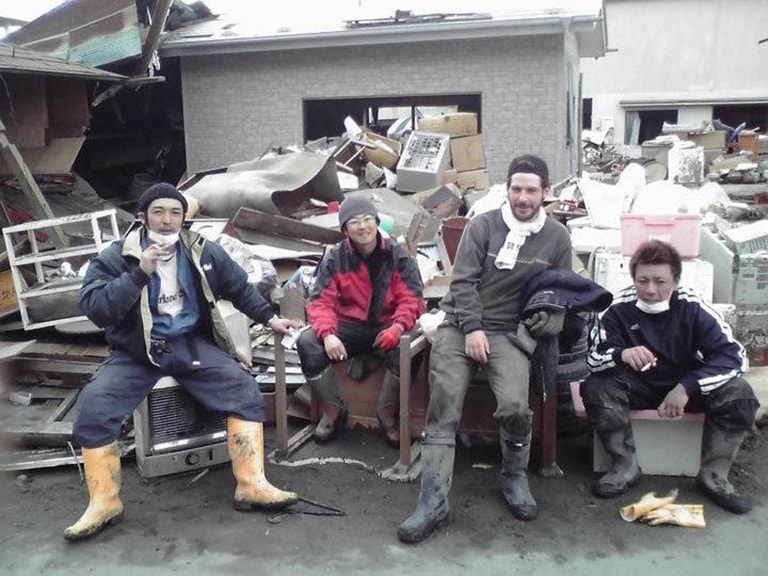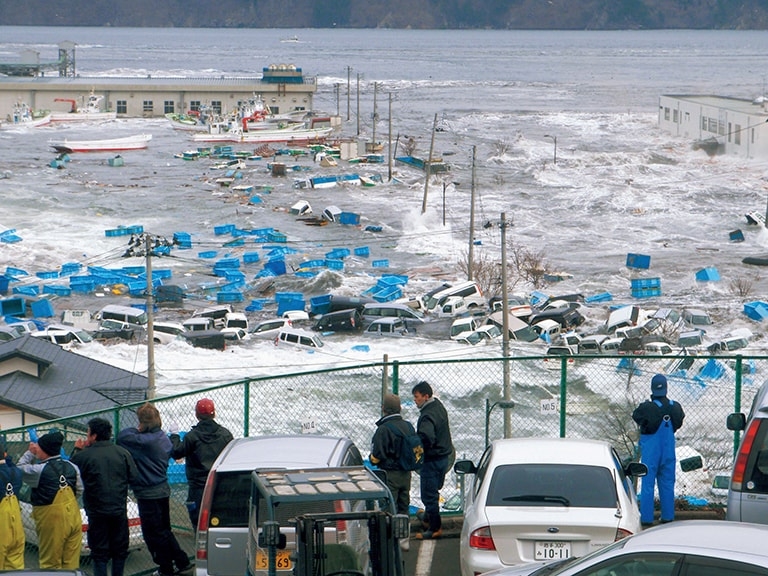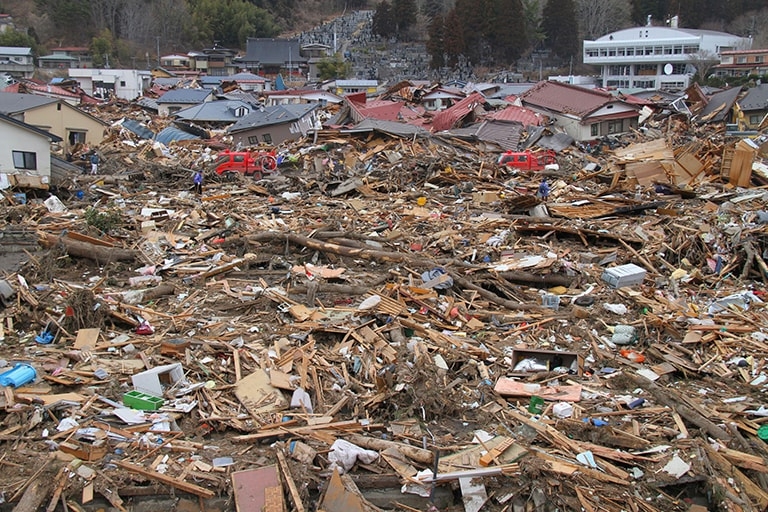OTHER
I survived the March 11 tsunami. Here's what it taught me about the people of Tohoku.
April 09, 2021

Cleanup crew: Matthew Ketchum (third from left) joined his friend's makeshift group to help clear his adopted hometown of rubble following the Great East Japan Earthquake. | COURTESY OF MATTHEW KETCHUM
Yugawara, Kanagawa Pref. – When an earthquake hits, there’s a moment, a few seconds in, where you ask yourself, “Should I panic?” That was me on March 9, 2011, the Wednesday before “the big one.”
The 11:45 a.m. quake registered as magnitude 7.3, which I felt with a hard thump in my apartment in Miyako, Iwate Prefecture, where I was living at the time. I ran downstairs to my landlord’s place in a panic, but he assured me there was nothing to be concerned about. He told me I’d know for sure when a real quake hit.
Two days later, at 2:46 p.m. on March 11, the real quake hit — a magnitude 9.0.
At first, I stayed put in my kotatsu and told myself it was OK. The shaking got worse, though, with a dizzying series of jolts that made it hard to stand. When the furniture started to topple, I bolted from my apartment. The building I was living in was old and I worried it might collapse.
On my way down the outdoor walkway to the street, I saw large cracks ripping through the walls of the neighboring buildings. It sounds weird, but the way the cracks opened and closed in the shaking reminded me of the jaws of a Tyrannosaurus rex. When I got to street level, the shaking stopped and my head cleared. In all, the quake lasted around six minutes but felt much longer. In fact, as we get further away from the date, I sometimes recall the experience being as long as 30 minutes. That could be because, after the initial quake occurred, there were numerous aftershocks that came in rapid succession. I’d never experienced anything like it before.
The 11:45 a.m. quake registered as magnitude 7.3, which I felt with a hard thump in my apartment in Miyako, Iwate Prefecture, where I was living at the time. I ran downstairs to my landlord’s place in a panic, but he assured me there was nothing to be concerned about. He told me I’d know for sure when a real quake hit.
Two days later, at 2:46 p.m. on March 11, the real quake hit — a magnitude 9.0.
At first, I stayed put in my kotatsu and told myself it was OK. The shaking got worse, though, with a dizzying series of jolts that made it hard to stand. When the furniture started to topple, I bolted from my apartment. The building I was living in was old and I worried it might collapse.
On my way down the outdoor walkway to the street, I saw large cracks ripping through the walls of the neighboring buildings. It sounds weird, but the way the cracks opened and closed in the shaking reminded me of the jaws of a Tyrannosaurus rex. When I got to street level, the shaking stopped and my head cleared. In all, the quake lasted around six minutes but felt much longer. In fact, as we get further away from the date, I sometimes recall the experience being as long as 30 minutes. That could be because, after the initial quake occurred, there were numerous aftershocks that came in rapid succession. I’d never experienced anything like it before.

